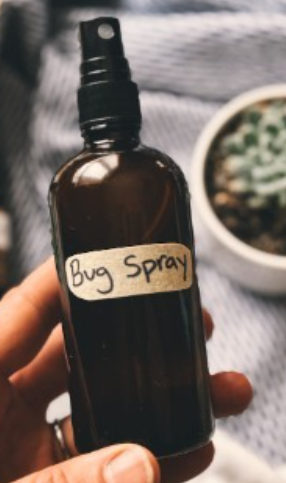What Is a Hydrosol? DIY Skincare's Secret Weapon
- Apr 8
- 3 min read

If you've ever stood in the natural beauty aisle wondering what on earth a hydrosol is, you're not alone. With names like floral water, herb water, and plant distillate floating around, it's easy to feel like you're missing some secret language of the skincare world. But here’s the good news: hydrosols are not only simple to understand—they’re also easy to make and a joy to use. Whether you’re looking to boost your skincare routine or dabble in herbal alchemy, hydrosols are about to become your new best friend.
What Is a Hydrosol?
Hydrosols are the aromatic waters that are produced when plants are steam distilled. This is the same process used to extract essential oils—but hydrosols are the gentler, water-based sibling. They contain the water-soluble components of the plant as well as a trace amount of essential oil, making them incredibly soothing and safe for daily use.
Imagine the calming scent of lavender or the refreshing zing of lemon balm, captured in a mist that you can spritz on your face, add to your bath, or use as a natural toner. That’s a hydrosol. Think of it as plant magic in a bottle.
Benefits of Hydrosols in Skincare
Hydrosols are perfect for all skin types, especially sensitive skin. Because they’re so gentle, they won’t irritate or overwhelm your skin barrier the way some essential oils or active ingredients can. Here are just a few of their superpowers:
Hydration: Mist it on before or after your moisturizer to lock in hydration.
Balance: Many hydrosols help balance your skin’s pH, which can soothe inflammation and irritation.
Antibacterial & Antimicrobial Properties: Herbs like lavender and rosemary can help manage acne-prone skin.
Mood Boosting: The aromatherapy benefits are real. A little spritz can elevate your mood or help you wind down.
How to Use a Hydrosol
There are so many ways to incorporate hydrosols into your routine:
As a facial toner or refreshing mist
Mixed into clay masks
As a gentle body spray or deodorant
In linen sprays or pillow mists
Added to DIY lotions, creams, or cleansers
As a soothing after-sun spray
Seriously, once you start using hydrosols, you’ll wonder how you ever lived without them.
How to Make a Hydrosol at Home
Now for the fun part. Making your own hydrosol is easier than you think. You don’t need a fancy distillation setup—just a few kitchen tools and your favorite herbs.
Here’s a beginner-friendly way to make a lavender hydrosol using the "stovetop method."
DIY Lavender Hydrosol
What You’ll Need:
A large pot with a lid (preferably glass or stainless steel)
A heat-safe bowl that fits inside the pot
A clean brick or canning jar ring (to elevate the bowl)
Ice cubes
Filtered water
2–3 cups of fresh or 1 cup dried lavender
A dark glass bottle or jar for storage
Instructions:
Place the Brick/Ring in the Pot: Put your brick or jar ring in the center of your large pot. This is your platform.
Add the Bowl: Place the heat-safe bowl on top of the brick. This will collect the hydrosol.
Add Herbs: Surround the bowl (not inside it!) with your fresh or dried herbs.
Add Water: Pour enough filtered water into the pot to just cover the herbs—but don’t let water get inside the bowl.

Invert the Lid: Place the pot lid on upside down. This way, when steam rises, it condenses and drips into the bowl.
Add Ice on Top: Add a bag of ice cubes on top of the inverted lid. This helps with condensation.
Heat It Up: Turn your stove to medium-low. You want the water to simmer, not boil aggressively.
Simmer: Let it go for about 30–40 minutes, replacing melted ice as needed.
Cool & Store: Once done, carefully remove the bowl with your hydrosol. Let it cool, then pour it into a clean dark glass bottle. Label with the date and herb.

Storage Tips: Store your hydrosol in the refrigerator for a longer shelf life (around 4–6 months). Always use clean hands or tools when handling to prevent contamination.
Which Herbs Make Great Hydrosols?
While lavender and lemon balm are favorites, you can make hydrosols from many common herbs:
Rose – soothing, cooling, romantic
Chamomile – calming, gentle for sensitive skin
Calendula – healing, anti-inflammatory
Peppermint – refreshing, cooling, great for oily skin
Sage – clarifying and toning
Feel free to experiment with single herbs or combinations. Just make sure you’re using organic herbs free of pesticides.
Final Thoughts
Hydrosols are a gentle yet powerful way to bring herbs into your daily skincare routine. They're beautiful, simple, and endlessly versatile—and the fact that you can make them yourself? That’s next-level herbal beauty.
Whether you choose lavender for calm or lemon balm for clarity, you’re working with the full spectrum of plant goodness. So go ahead: channel your inner apothecary, make a little plant water, and treat your skin like the garden it is.




Comments